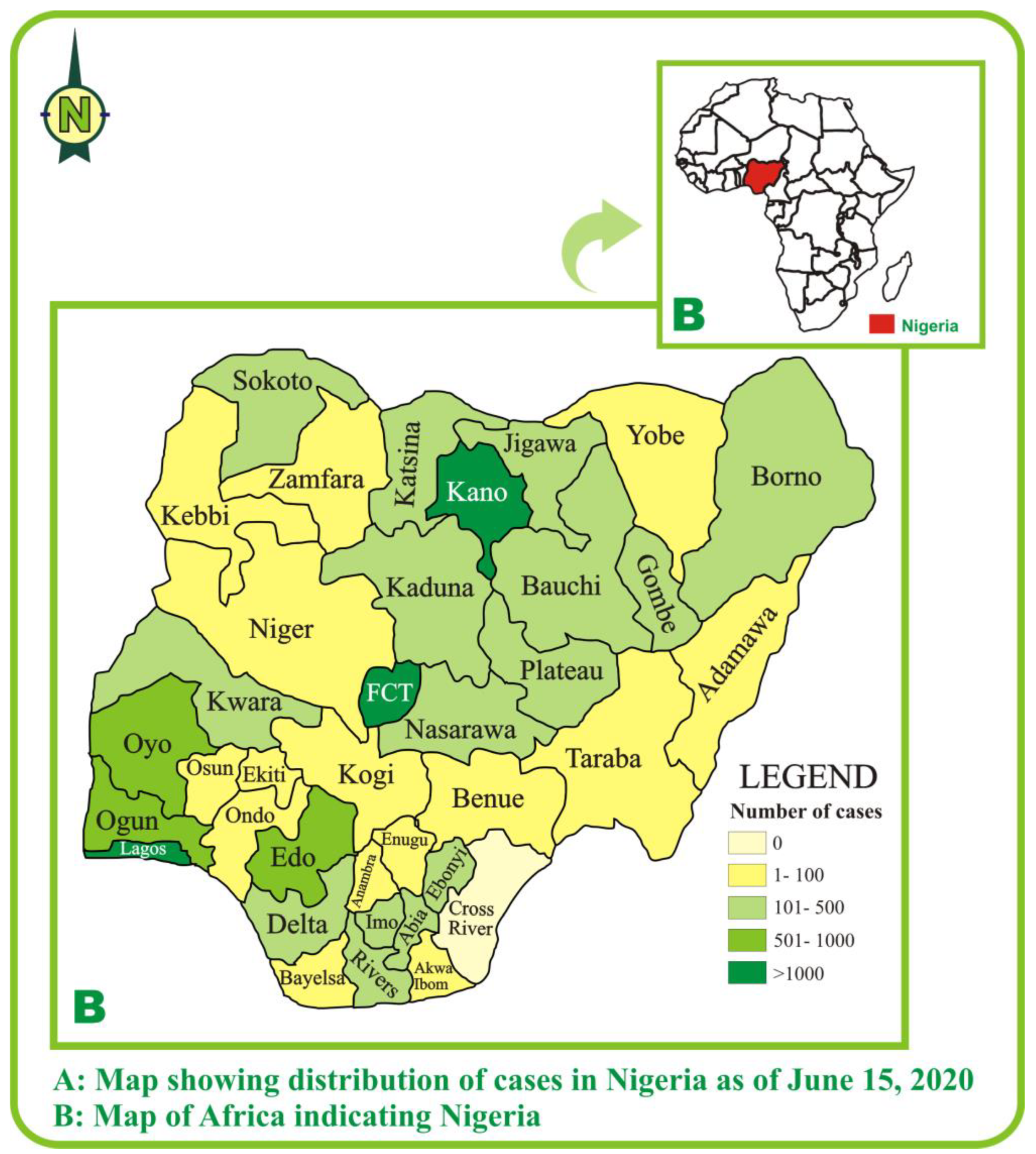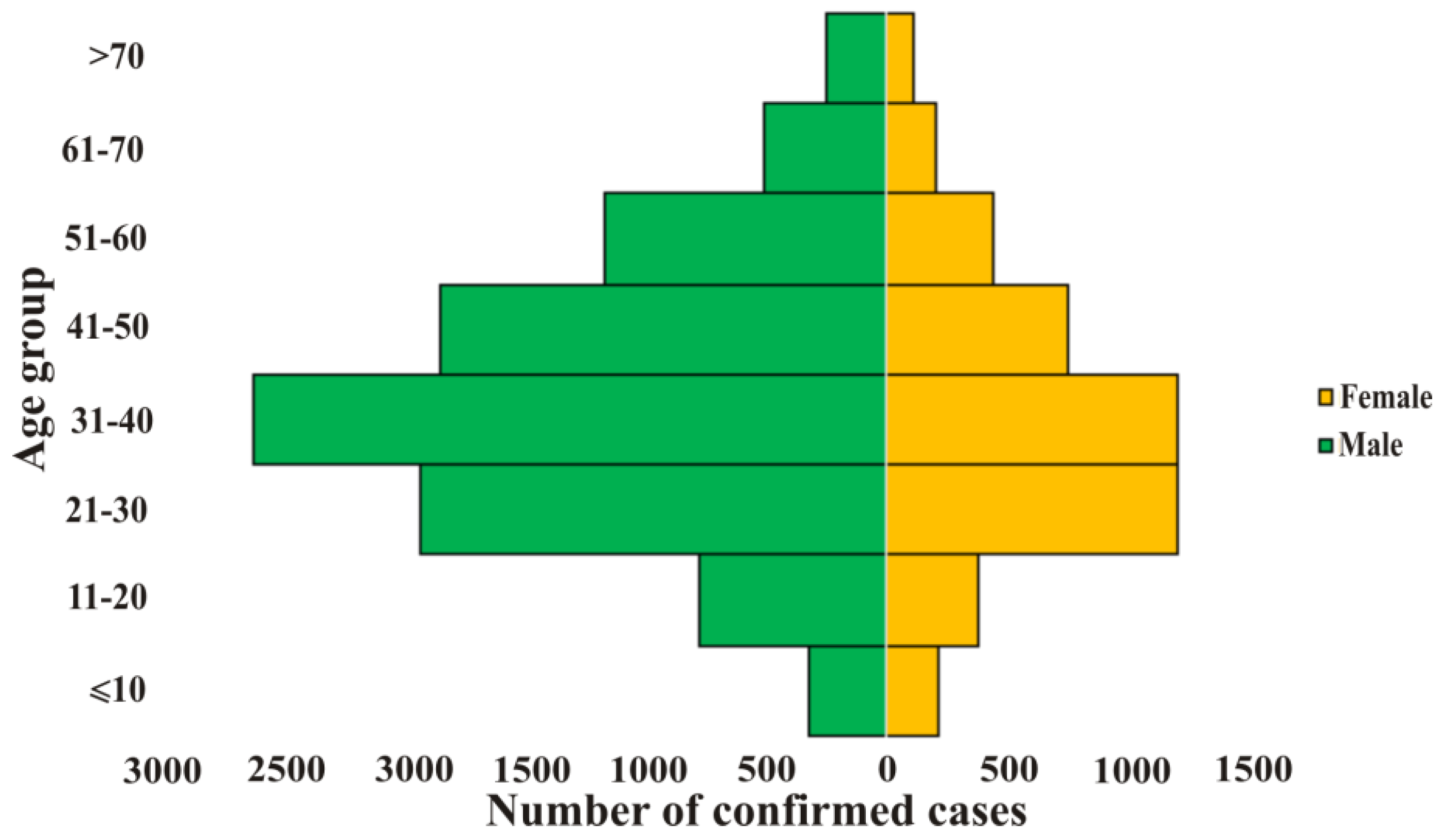COVID-19 in Nigeria: Situation Update and Combative Measures Taken by the Government
Measures taken by the Nigerian Government to combat COVID-19
- On February 28, 2020, the Federal Ministry of Health via the Nigeria Centre for Disease Control activated a multi-sectoral emergency operation center (EOC) at level 3 which is the highest level of response to public health emergencies. On the same day, risk communication campaigns were initiated across the country.
- On March 3, 2020, passengers screening commenced at international airport using temperature scanners. The same day, NCDC designed and published infographics and were disseminated in various national media channels. Furthermore, training commenced for representatives from private health facilities in collaboration with Guild of Medical Directors (GMD). The trainings included: Infection Prevention and Control Recommendations for Health Workers (which consists of guidelines on early detection, screening, isolation and management of suspected cases), proper use of personal protective equipment, case definition guide for diagnosis, and frequently asked questions and how to notify NCDC of suspected case(s).
- On March 4, 2020, the Federal Ministry of Health via NCDC commenced development of infection prevention and control (IPC) scorecard. The scorecard is for the evaluation of IPC implementation in healthcare centers.
- On March 7, 2020, draft tools for tracking and monitoring healthcare workers (HCW) infection was developed. This ensures documentation and monitoring of all HCWs who are ill with fever and/or respiratory symptoms (e.g., cough or dyspnea) or have been in contact (unprotected) with a person with suspected or confirmed case of COVID-19, or are designated as self-isolation according to local public health directives and same is ensured not to enter or return to the acute healthcare setting for at least 14 days after their last exposure.
- On March 8-9, 2020, protocol for follow up testing for negative result was developed and implemented. Suspected cases with negative results are documented and followed up concurrently in event of future developments.
- On March 9, 2020, President Buhari inaugurated Presidential Task Force on COVID-19 that later implemented compulsory wearing of non-medical face mask in public places and maintenance of social distancing and ensured compliance by worship centers.
- On March 17, 2020, guidelines for safe mass gathering were published. The regulation requires organizers of social gatherings to provide: temperature scanners at point of entry, closed waste management system, hand washing facility, disinfectants at post-gathering, health personnel to detect fever on entry, and review of some activities of worship centers such as shaking of hands, sharing of communion cups, ablution and more.
- On March 21, 2020, contact tracing of new confirmed cases commenced as this wasn’t formally instituted.
- On March 22, 2020, laboratories with PCR testing capacity were assessed and added to the existing ones. The total testing laboratories became 23 in number.
- The Federal Government shut down schools, organizations, businesses, worship centers and movement in FCT, Lagos and Ogun States on 30th March, 2020 for 14 days which was later extended for another 14 days. Also, inter-State movement was restricted for essential duties and goods only.
- Fully expanded laboratory network for COVID-19 across the 6 geopolitical zones with 7 laboratories was activated on March 31, 2020. Also, rapid response team were deployed in all states with cases. The team comprised: medical personnel that cuts across medical professions among doctors, nurses, laboratory staff, epidemiologists and more.
- On April 13, 2020, COVID-19 starter packs were deployed to all tertiary institutions and federal medical centers. The starter packs consisted of medical consumables which include personal protective equipment, diagnostic and case management equipment and human resources for contact tracing and follow-up.
- On May 7, 2020, NCDC developed jingles in 7 local languages on proper use of face mask.
- On June 13, 2020, guidelines on re-opening of worship places were launched and circulated to religious leaders and the public. The guideline requires all attendees of religious gathering to wear face mask and the number of attendees should not exceed 1/3 of the seating capacity of the venue. Also, the provision of: hand washing facilities and hand sanitizers at point of entry, marked sitting positions that are maintained at least 2 m apart. The requirement also discouraged attendance of sick persons, practice of handshake, peace sign, ablution and any activity that requires direct contact, plus disinfection of worship center post worship.
Author Contributions
Funding
Conflicts of Interest
References
- Yinka-Ogunleye, A.; Aruna, O.; Dalhat, M.; et al. Outbreak of human monkeypox in Nigeria in 2017-18: a clinical and epidemiological report. Lancet Infect Dis. 2019, 19, 872–879. [Google Scholar] [CrossRef] [PubMed]
- Okoroiwu, H.U.; Akpotuzor, J.O. Lassa—a latent threat to West Africa: how ready are we? J Glob Infect Dis. 2018, 10, 169–170. [Google Scholar] [CrossRef] [PubMed]
- Kahkahi, R.E.; Moustaine, M.; Hafidi, M.; Zouhair, R.; Errakhi, R. Coronavirus disease (COVID-19) in Morocco: situation update and proposed remedial measures. Germs. 2020, 10, 129–131. [Google Scholar] [CrossRef] [PubMed]
- Phelan, A.L.; Kartz, R.; Gostiri, L.O. The novel coronavirus originating in Wuhan, China: Challenges for global health governance. JAMA 2020, 323, 709–710. [Google Scholar] [CrossRef] [PubMed]
- Nigeria Center for Disease Control. COVID-19 outbreak in Nigeria situation report. S/N 001. NCND 2020.
- Nigeria Center for Disease Control. COVID-19 Nigeria: Confirmed cases by status. Available online: http://covid19.ncdc.gov.ng#: (accessed on 15 June 2020).
- Nigeria Centre for Disease Control. An update of COVID-19 outbreak in Nigeria: Week 25, June 14. Available online: https://ncdc.gov.ng/diseases/sitreps/?cat=14&name=An%20update%20of%20COVID-19%20outbreak%20in%20Nigeria (accessed on 15 June 2020).
- Worldometer. COVID-19 coronavirus pandemic; reported cases and deaths by country, territory or conveyance. Available online: https://www.worldometers.info/coronavirus/?utm_cam paign=homeAdvegas1?%20 (accessed on 15 June 2020).
- World Health Organization. Coronavirus disease (COVID-19): Situation report 146. Available online: https://www.who.int/emergencies/diseases/novel-coronavirus-2019/situation-reports (accessed on 15 June 2020).
- Ihekweazu, C.; Agogo, E. Africa’s response to COVID-19. BMC Med. 2020, 18, 151. [Google Scholar] [CrossRef] [PubMed]
- Koks, S.; Williams, R.W.; Quinn, J.; et al. COVID-19: Time for precision epidemiology. Exp Biol Med (Maywood). 2020, 245, 677–679. [Google Scholar] [CrossRef] [PubMed]


© GERMS 2025.
Share and Cite
Okoroiwu, H.U.; Uchendu, I.K.; Ogar, C.O.; Okafor, I.M. COVID-19 in Nigeria: Situation Update and Combative Measures Taken by the Government. GERMS 2020, 10, 274-278. https://doi.org/10.18683/germs.2020.1218
Okoroiwu HU, Uchendu IK, Ogar CO, Okafor IM. COVID-19 in Nigeria: Situation Update and Combative Measures Taken by the Government. GERMS. 2020; 10(3):274-278. https://doi.org/10.18683/germs.2020.1218
Chicago/Turabian StyleOkoroiwu, Henshaw Uchechi, Ikenna Kingsley Uchendu, Christopher Ogar Ogar, and Ifeyinwa Maryann Okafor. 2020. "COVID-19 in Nigeria: Situation Update and Combative Measures Taken by the Government" GERMS 10, no. 3: 274-278. https://doi.org/10.18683/germs.2020.1218
APA StyleOkoroiwu, H. U., Uchendu, I. K., Ogar, C. O., & Okafor, I. M. (2020). COVID-19 in Nigeria: Situation Update and Combative Measures Taken by the Government. GERMS, 10(3), 274-278. https://doi.org/10.18683/germs.2020.1218



